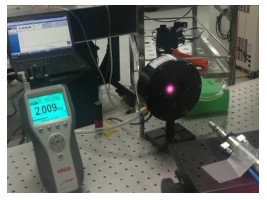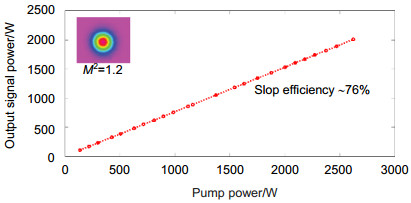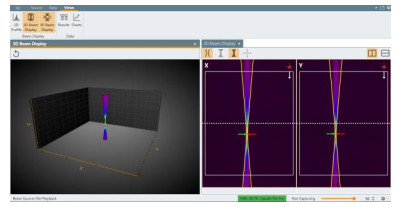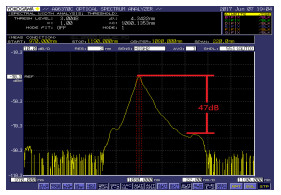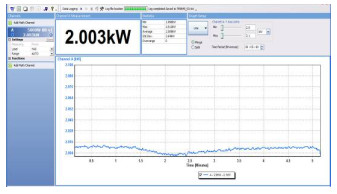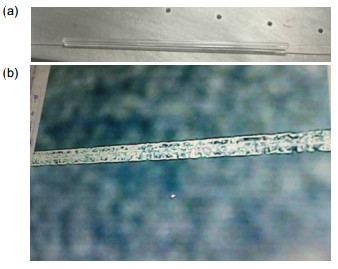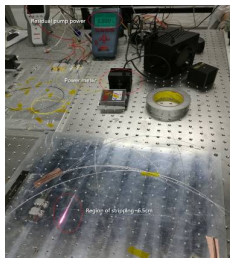| Citation: | Zhang Fan, Zhang Xinhai. 2 kW single-mode fiber laser employing bidirectional-pump scheme[J]. Opto-Electronic Engineering, 2017, 44(10): 953-956. doi: 10.3969/j.issn.1003-501X.2017.10.002 |
2 kW single-mode fiber laser employing bidirectional-pump scheme
-
Abstract
A 2 kW single-mode fiber laser with two cascade home-made cladding light strippers (CLSs) has been demonstrated by employing bidirectional-pump scheme. 2.009 kW signal power is obtained when pump power is 2.63 kW and the slope efficiency is 76.6%. Raman Stokes light is less than -47 dB at 2.009 kW even with a 10-m delivery fiber with core/inner cladding diameter of 20 mm/400 mm. The beam quality M2≤1.2 and the spectral FWHM bandwidth is 4.34 nm. There is no transverse mode instability and the output power stability of ±0.14% is achieved by special thermal management for a more uniform temperature distribution on the Yb-doped gain fiber.
-
Keywords:
- fiber laser /
- high power /
- stimulated Raman scattering /
- power stability
-

-
References
[1] Zervas M N, Codemard C A. High power fiber lasers: A review[J]. IEEE Journal of Selected Topics in Quantum Electronics, 2014, 20(5): 219–241. doi: 10.1109/JSTQE.2014.2321279 [2] Yu Hongbo, Kliner D A V, Liao K H, et al. 1.2-kW single-mode fiber laser based on 100-W high-brightness pump diodes[J]. Proceedings of SPIE, 2012, 8237: 82370G. doi: 10.1117/12.908454 [3] Khitrov V, Minelly J D, Tumminelli R, et al. 3kW single-mode direct diode-pumped fiber laser[J]. Proceedings of SPIE, 2014, 8961: 89610V. doi: 10.1117/12.2037453 [4] Fang Qian, Shi Wei, Qin Yuguo, et al. 2.5 kW monolithic continuous wave (CW) near diffraction-limited fiber laser at 1080 nm[J]. Laser Physics Letters, 2014, 11(10): 105102. doi: 10.1088/1612-2011/11/10/105102 [5] Yu Hailong, Zhang Hanwei, Lv Haibin, et al. 3.15 kW direct diode-pumped near diffraction-limited all-fiber-integrated fiber laser[J].Applied Optics, 2015, 54(14): 4556–4560. doi: 10.1364/AO.54.004556 [6] Rosales-Garcia A, Tobioka H, Abedin K, et al. 2.1 kW single mode continuous wave monolithic fiber laser[J]. Proceedings of SPIE, 2015, 9344: 93441G. [7] Mashiko Y, Nguyen H K, Kashiwagi M, et al. 2 kW single-mode fiber laser with 20-m long delivery fiber and high SRS suppression[J].Proceedings of SPIE, 2016, 9728: 972805. doi: 10.1117/12.2212049 [8] Ma Pengfei, Tao Rumao, Su Rongtao, et al. 1.89 kW all-fiberized and polarization-maintained amplifiers with narrow linewidth and near-diffraction-limited beam quality[J]. Optics Express, 2016, 24(4): 4187–4195. doi: 10.1364/OE.24.004187 [9] Xiao Q R, Yan P Z, Li D, et al. Bidirectional pumped high power Raman fiber laser[J]. Optics Express, 2016, 24(6): 6758–6768. doi: 10.1364/OE.24.006758 [10] Jauregui C, Otto H J, Stutzki F, et al. Simplified modelling the mode instability threshold of high power fiber amplifiers in the presence of photodarkening[J]. Optics Express, 2015, 23(16): 20203–20218. doi: 10.1364/OE.23.020203 [11] Ward B, Robin C, Dajani I. Origin of thermal modal instabilities in large mode area fiber amplifiers[J]. Optics Express, 2012, 20(10): 11407–11422. doi: 10.1364/OE.20.011407 [12] Hansen K R, Alkeskjold T T, Broeng J, et al. Theoretical analysis of mode instability in high-power fiber amplifiers[J]. Optics Express, 2013, 21(2): 1944–1971. doi: 10.1364/OE.21.001944 [13] Otto H J, Stutzki F, Jansen F, et al. Tünnermann. Temporal dynamics of mode instabilities in high-power fiber lasers and amplifiers[J]. Optics Express, 2012, 20(14): 15710–15722. doi: 10.1364/OE.20.015710 [14] Robin C, Dajani I, Pulford B. Modal instability-suppressing, single-frequency photonic crystal fiber amplifier with 811 W output power[J]. Optics Letters, 2014, 39(3): 666–669. doi: 10.1364/OL.39.000666 [15] Koponen J, S derlund M, Hoffman H J, et al. Photodarkening measurements in large mode area fibers[J]. Proceedings of SPIE, 2007, 6453: 64531E. [16] Ward B. Theory and modeling of photodarkening-induced quasi static degradation in fiber amplifiers[J]. Optics Express, 2016, 24(4): 3488–3501. doi: 10.1364/OE.24.003488 [17] Becker F, Benjamin N, Winkelmann L, et al. Multi-kW cw fiber oscillator pumped by wavelength stabilized fiber coupled diode lasers[J]. Proceedings of SPIE, 2013, 8601: 860131. doi: 10.1117/12.2004698 -
Overview

A high power single-mode fiber laser is an attractive laser source which has various application fields such asmaterials processing and long-distance laser energy transmission. In the last decades, the output powers of monolithicfiber lasers have increased remarkably. However, the power scaling of the single-mode fiber lasers is limited by the traditional fiber nonlinear effects and transverse mode instability (TMI). Among fiber nonlinear effects, the stimulated Raman scattering (SRS) is the main limiting factor for continuous-wave fiber lasers. SRS results in the output power instability of the fiber laser. Backward SRS is also damagingly raised by the reflected light from the optics or the work piece ina practical laser system. Therefore, a laser with high SRS suppression is desired for stable operation of a laser system.Besides, photodarkening is also found in Yb-doped high power fiber laser, which can cause the decrease of output power,long term stability and operation life of the fiber laser. Koponen has observed a seventh-order dependence of the PD rateon the excited-state Yb concentration for two different fibers. This result implies that PD of an Yb-doped fiber sourcefabricated using a particular fiber will be strongly dependent on the Yb inversion rate and lower inversion rate can beobtained by using 976 nm pump light as compared to 915 nm. A single-mode fiber laser employing bidirectional-976 nmpump scheme and high SRS suppression and high power stability are demonstrated without any TMI. We investigate thesignal power vs. pump power (S-P) performances, beam distribution and quality, output spectrum and output powertemporal characteristic of the fiber laser oscillator with bidirectional-pumping configuration. The forward-pumping isfirstly utilized and then bidirectional-pumping is utilized to further scale the output laser. Besides, the performance ofthe homemade CLS used in the 2 kW system is described. By employing bidirectional-pumping, the TMI is remarkablymitigated and when the output power is further scaled to 2 kW with a slope efficiency of 76.6%, the Raman stokes lightis ~47 dB below the signal power even with a 10-m delivery fiber with core/inner cladding diameter of 20 μm/400 μm.Nearly diffraction-limited beam quality is also confirmed with the measured M2 below 1.2 and no residual pump andcladding light are observed. Beside, remarkable power stability is also demonstrated because of more uniform temperature distribution on Yb-doped gain fiber by a special thermal management. From the experimental results and theoretical evaluation, an output power of 3 kW is believed to be achieved by further increasing pump power.
-
Access History

-
Figure 1.
Setup of bidirectional-976 nm pumped all-fiber laser.
-
Figure 2.
Maximum output power measured by 5000-BB-V1 of Ophir VEGA.
-
Figure 3.
Output power versus pump power, and beam profile at focal point.
-
Figure 4.
2D and 3D beam display at maximum output power.
-
Figure 5.
Laser output spectra at the maximum output power (P=2.008 kW).
-
Figure 6.
Laser output temporal characteristic at the maximum output power.
-
Figure 7.
(a) The picture of the encapsulated CLS. (b) The picture of the surface of CLS after abrading.
-
Figure 8.
Residual pump power when 209.4 W pump power goes through the homemade CLS.
-
Figure 9.
(a) Temperature of CLS when 209.4 W pump power goes through. (b) Residual pump power output from the CLS vs. input pump power 209.4 W.

 E-mail Alert
E-mail Alert RSS
RSS
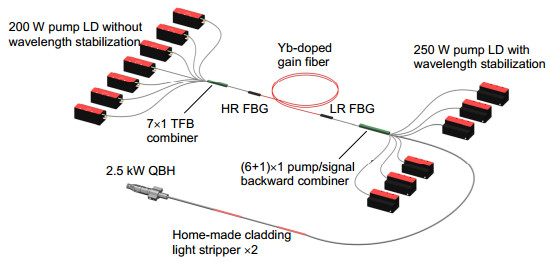

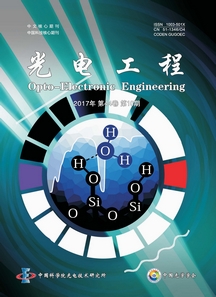
 DownLoad:
DownLoad:
